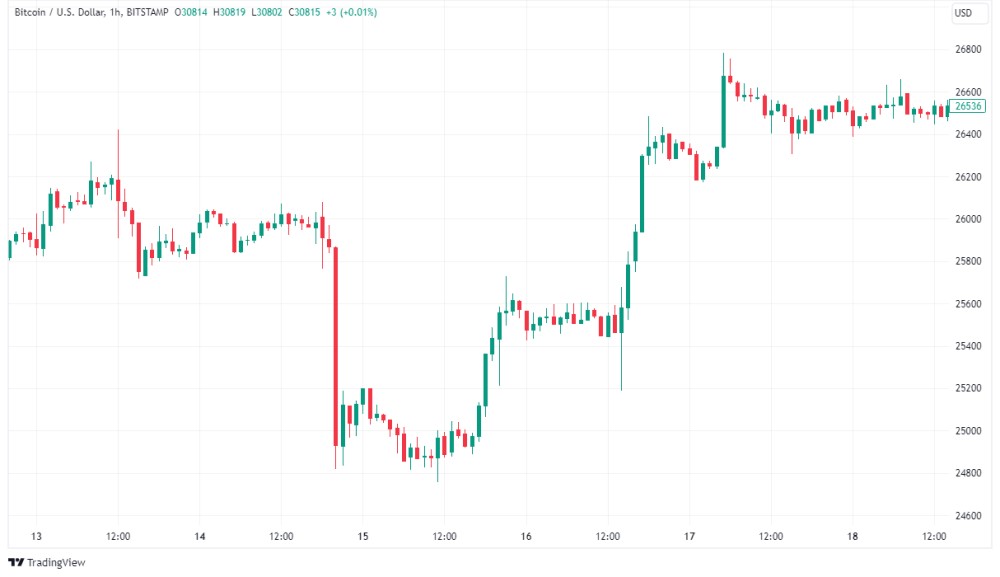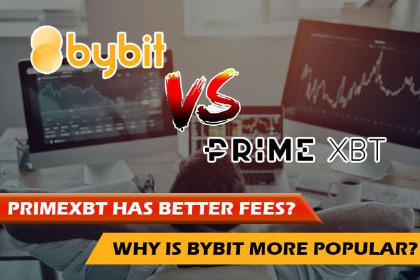Apart from leverage, there are other risks you should be aware of when it comes to crypto derivatives. One of them is directly related to the exchange.

Generally, trading derivatives comes with significant risks due to the high leverage involved which tends to multiply the risks and rewards of any price movement.
Crypto derivatives are suited to traders that can fully grasp and take responsibility for all the risks that are involved. This is why novice traders or traders with limited experience are not advised to participate in trading crypto derivatives.
Some of the existing risks of derivatives trading which are discussed below include:
- Leverage risks: if the market moves against a leveraged position, the losses incurred can exceed the initial investment.
- Regulatory risks: the regulatory environment surrounding cryptocurrencies and derivatives is still evolving and can vary significantly across jurisdictions.
- Price risks: prices can experience rapid and significant fluctuations, which can lead to substantial gains or losses.
- Exchange risks: forced liquidation, forced under-weightage, and many more.
So, without any further, let's check the following explanation.
1. Leverage Risks
Investors must understand that a significant amount of leverage is involved in derivatives transactions which could lead to a multiplication of both profits and losses.
This may result in trading positions being closed forcibly due to margin calls, or it may require additional capital to maintain open positions.
Leverage on crypto exchanges is typically provided in the form of leverage ratios, such as 10x, 25x, or 100x. This ratio indicates how many times your equity can be multiplied compared to the amount of capital you invest.
For example, if you use 10x leverage and have an initial capital of $1,000, with this leverage, you can control a position worth $10,000. In this scenario, you provide $1,000 as margin or collateral to control a position worth $10,000.
Let's consider the following example scenario:
- You have an initial capital of $1,000.
- You use 10x leverage.
- With this leverage, you can control a position worth $10,000.
You decide to buy Bitcoin derivatives at a price of $50,000. With your $1,000 capital, you can control a Bitcoin position worth $10,000.
If the price of Bitcoin derivatives rise to $55,000 and you decide to sell, you will make a profit of $500 (the difference between the selling price and the buying price multiplied by the amount of Bitcoin controlled).
However, if the price of Bitcoin falls to $45,000, you will incur a loss of $500.
Note that leverage can also amplify losses. If the price of Bitcoin falls further, let's say to $40,000, you will experience a loss of $1,000, which is equal to your initial capital. In this case, 10x leverage has magnified your loss.
2. Regulatory Risks
Transactions involving derivatives may be subject to regulatory risks in some regions or countries in the world.
For example, the government of Country X becomes increasingly concerned about potential risks associated with unregulated crypto derivatives trading, such as investor protection, market manipulation, and money laundering.
They decide to introduce stricter regulations to address these concerns.
The government of Country X implements new regulations that require crypto derivatives exchanges to obtain licenses, adhere to specific reporting and disclosure requirements, implement robust AML and KYC procedures, and comply with strict risk management measures.
Some exchanges may struggle to meet the requirements, leading to closures or the migration of operations to other jurisdictions with more favorable regulatory environments.
The introduction of stricter regulations also deters some traders from participating in crypto derivatives markets due to concerns about increased oversight, limitations on leverage, or additional compliance requirements.
This is why investors must be aware of the prevailing policy and regulatory conditions in their specific regions to avoid losses that may arise due to the restrictions.
See Also:
3. Price Risks
As a special product that has its investment value affected by a myriad of factors, the price of digital assets can fluctuate immensely. The price movements of derivatives are more complex for investors to fully understand which increases the potential to make mistakes.
The high volatility of crypto derivatives can lead to significant price swings in short periods. This volatility is often magnified in derivatives markets, where price movements can occur rapidly and dramatically, as shown in the following chart:

Therefore, if an investor cannot control or manage this risk effectively, they can suffer significant losses.
See Also:
4. Exchange Risks
Products involving the use of high leverage such as derivatives expose the market to stability risks. This is why the derivative exchange adequately monitors the risks to market stability and takes the appropriate actions which include but are not limited to forced liquidation, forced under-weightage, and many more.
At the same time, the exchange provides written explanations to its clients regarding the actions taken to this effect.
Another possible risk comes in the form of the derivatives transaction rules including but not limited to product rules, adjustment coefficient, and due date.
This is something that clients need to watch out for because if there are changes to be implemented to product rules, they are expected to make necessary modifications to their strategies and trading positions.
The exchange has an obligation to inform its clients of these changes via an official website announcement or SMS notification. Still, clients will have to bear whatever profits or losses arising from the changes made.
How to Trade Crypto Derivatives
To start trading crypto derivatives, one needs to choose an exchange that provides the service. Below are the processes involved to start trading on Huobi, one of the most well-known exchanges offering crypto derivatives:
- Investors need to open an account on Huobi and provide the necessary information to complete the process.
- Log in to the account on Huobi APP, look for "Derivatives: at the bottom of the homepage, and locate USDT-M contracts on the top.
- Choose the contract type and the preferred account mode for trading.
- This involves the transfer of assets into USDT-margined contracts accounts, so there are two types available namely Cross margin account and Isolated margin account. Investors can choose based on the asset derivatives they want to trade.
- Choosing and modifying leverage can be done before opening a position or while maintaining positions without any open orders.
- Placing of orders in which investors can choose to use grid trading, trigger order, and limit order depending on their preferences.
- Once the order is filled, traders can find the open position under "Positions" where various operations can be implemented including Stop-Limit, Close Long/Short, etc. The unfilled part of the order is then displayed under "Open Orders" which can be canceled before it gets filled.
- To close a position, investors can choose from two order types namely limit order and trigger order. Alternatively, positions can be closed by implementing the "Flash Close" or "Close" operation under "Positions".
More than just a way to trade cryptocurrency, derivatives do provide a higher return once you can manage the risks competently. If you're ready to take a step on the next level, learn how to profit from derivatives trading.

 Dedicated FREE FOREX VPS
Dedicated FREE FOREX VPS Free FOREX Virtual Private Server
Free FOREX Virtual Private Server MT4 Demo Contest, Get $500
MT4 Demo Contest, Get $500 Sign Up for an Account, Claim 60% Deposit Bonus
Sign Up for an Account, Claim 60% Deposit Bonus Free MT4/MT5 VPS 2024
Free MT4/MT5 VPS 2024 Send E-mail and Get Free Merchandise
Send E-mail and Get Free Merchandise $1K Refer a Friend Bonus for Pepperstone Pro clients
$1K Refer a Friend Bonus for Pepperstone Pro clients Maximize Your Earnings with 100% Deposit bonus
Maximize Your Earnings with 100% Deposit bonus Trade to Win, $5,000 Monthly Demo Contest
Trade to Win, $5,000 Monthly Demo Contest Claim 30% + 15% Deposit Bonus from LiteFinance
Claim 30% + 15% Deposit Bonus from LiteFinance




